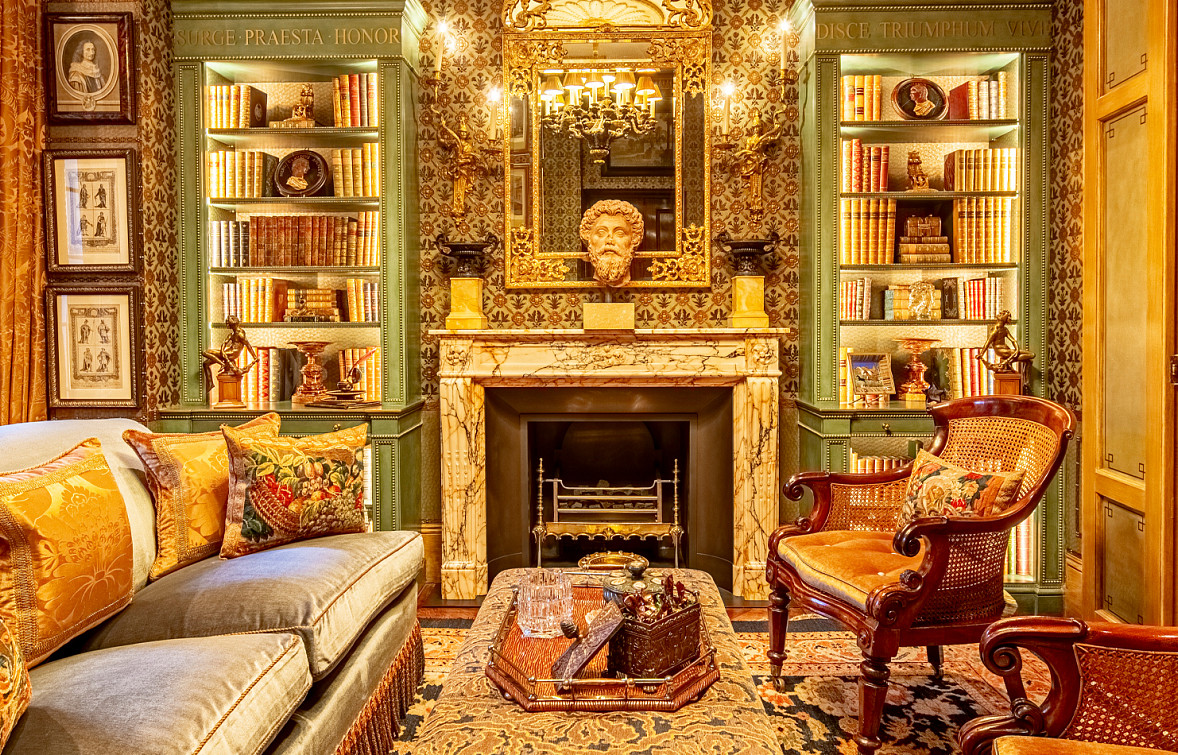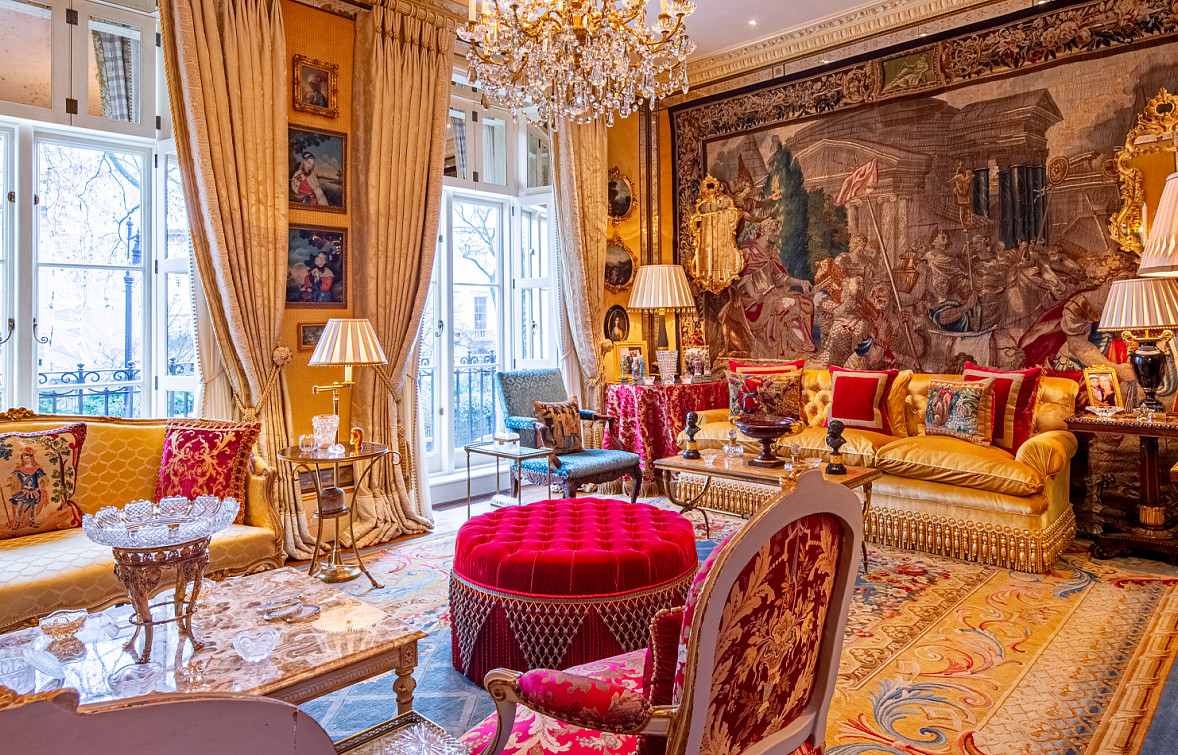



Led by integrator Inspired Dwellings, the project, dubbed House on the Crescent, saw the seamless update of an early 19th-century Grade II-listed building that spreads across seven floors featuring a collection of grand salons, formal dining rooms, and smaller reception rooms and antechambers.
The renovation's primary challenge, navigated with expertise by Ian Wylie Architects, was to infuse state-of-the-art technology into this historic canvas without marring its intrinsic charm. The design strategy embraced a philosophy of continuity, ensuring that every technological enhancement complemented the historic integrity of the spaces.
This philosophy extended to the integration of invisible speakers and televisions hidden behind antique mirrors, alongside control plates that mirrored the design of existing bronze sculptures. Even the closed-circuit television cameras were meticulously hand-painted to blend into the surrounding décor. The pièce de résistance was the cinema room, featuring a hand-painted motorised chinoiserie screen and coordinated wall and ceiling speaker grilles, exemplifying the project's commitment to aesthetic coherence.
Rejecting the modern trend towards open-plan spaces, the renovation preserved the original multi-room configuration of the house. This decision preserved the building’s historical layout but introduced complexities in the management of the home’s new technologies. Over 70 keypads, controlling 220 lighting zones, were customised for each room, finished in antique bronze to align with the traditional décor. The cinema room, constrained by space, featured an ingeniously mounted vertical projector reflecting its image off a strategically placed mirror, a solution that echoed the innovative spirit of the entire project.
The client's insistence on perfection influenced every aspect of the project. The integration of sophisticated technology had to serve the house’s functionality as a family home, ensuring comfort and practicality. Partners such as Crestron, Lutron, and Meridian Audio provided advanced systems that were intuitive and user-friendly. A Crestron system, bolstered by enterprise-grade Wi-Fi, allowed easy management of audio, television, lighting, security, and climate control systems, customised to distinguish between the needs of family and staff through the incorporation of fingerprint recognition technology.
Further customisation through Virtual Private Networks (VPNs) enabled the client to access international media content, reflecting a personalised approach to global connectivity. The aim to remotely monitor and control the property required a robust technological backbone, ensuring the durability of the systems and minimising the need for future alterations that might disrupt the bespoke interiors.
The budget was strategically allocated to large-scale purchasing and investment in durable technology, a forward-thinking approach that balanced upfront costs with long-term value preservation.
Overall, the project not only revived a historical structure but also transformed it into a thoroughly modern home, equipped for the future while respecting its past. For architects unfamiliar with smart home technology, it demonstrates how sensitive integration can enhance both the functionality and aesthetics of historic properties, creating spaces that are not merely lived in but truly experienced.


We have members all around the world. Find a CEDIA Smart Home Installer near you.
CEDIA Smart Home Installers